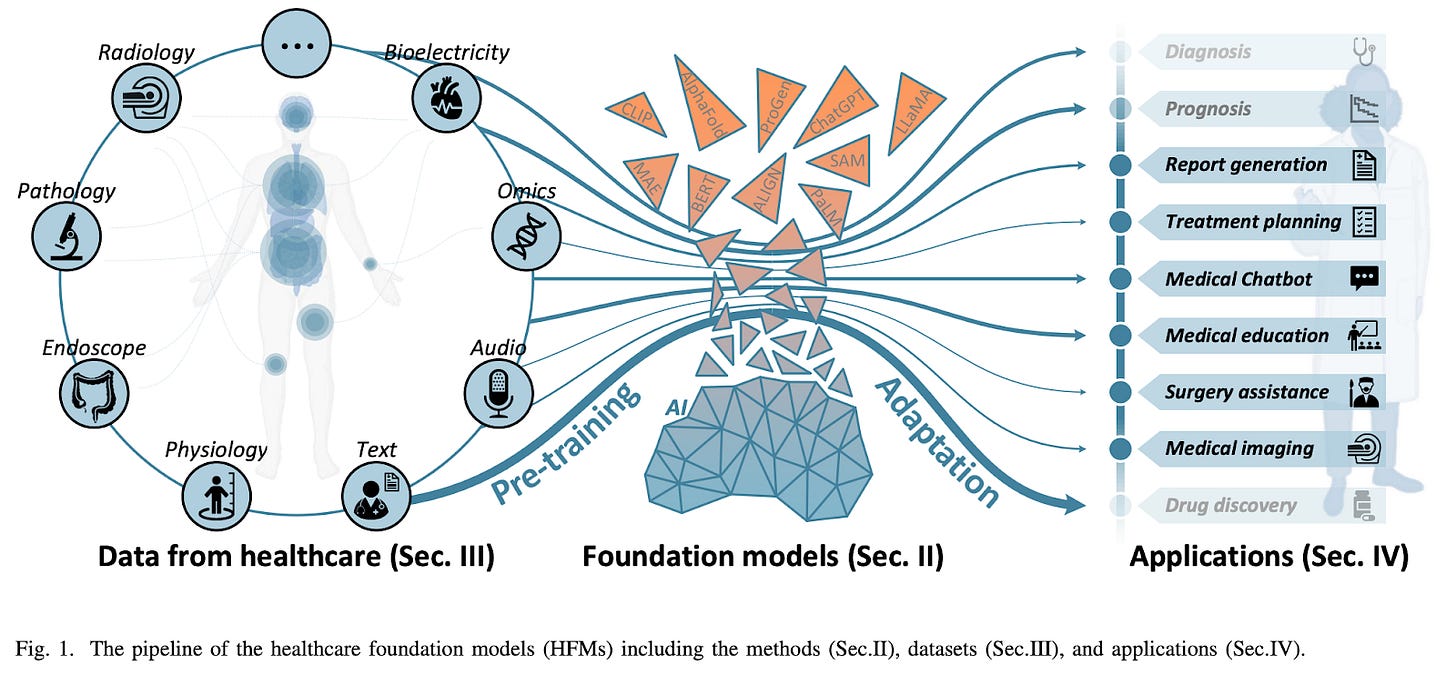13 Foundation Models: Startups, Industry Updates and the Nobel Prize
From AlphaFold’s Nobel recognition to emerging platforms in drug discovery, genomics, and digital biology—tracking the expanding field of foundation models.
Since our previous overview of foundation models and start-ups in the life science field, a historical event took place on October 9th, 2024: the Nobel Prize in Chemistry was awarded to David Baker, Demis Hassabis, and John Jumper for their contributions to computational protein design and AI-driven protein structure prediction.
The significance of their discoveries lies in previously unmatched accuracy in structure prediction (median backbone accuracy of 0.96 Å r.m.s.d. for AlphaFold) and remarkable scalability in handling complex protein structures.
Hassabis and Jumper developed AlphaFold, an AI model capable of predicting 3D protein structures from amino acid sequences, reducing the time and effort traditionally required for experimental methods from several years to minutes. In parallel, David Baker’s RoseTTAFold advanced computational protein design further.
Introduced in 2021, RoseTTAFold is a three-track neural network that simultaneously considers patterns in protein sequences, amino acid interactions, and potential 3D structures, enabling fast and accurate protein structure prediction. The Nobel committee's recognition shows that foundation models like AlphaFold and RoseTTAFold redefine our approach to understanding and engineering proteins.
In this week’s newsletter we look at the upcoming foundation models with applications in healthcare, research, biosystems design and beyond.
Defining Foundation Models—A foundation model is a large-scale AI system pre-trained on extensive, diverse datasets, enabling it to function as a universal base for multiple specialized applications. These models employ self-supervised learning to capture complex patterns in data without the need for manually labeled examples. For instance, in natural language processing, they predict the next word in a sequence based on contextual clues. In computer vision, they recognize and generate images by discerning complex visual patterns. The key characteristic that makes these models “foundational” is their capacity to generalize across tasks—whether it is generating human-like text, interpreting images, or predicting protein structures—thus significantly reducing the need to develop separate, task-specific models.

10 Foundation Model Startups
Variant Bio
Variant Bio, based in Washington, USA, is developing foundation models through its proprietary VB-Inference platform. This platform integrates deep phenotyping and multi-omic data using statistical genetics and AI/ML approaches to identify and validate therapeutic targets.
By analyzing genetic data from diverse populations, including those with unique genetic architectures and exceptional health-related traits, Variant Bio aims to uncover novel genetic factors associated with disease resistance and health. Their approach focuses on tailoring treatments based on comprehensive genetic insights.
In January 2025, Variant Bio entered into a multi-year research collaboration with Novo Nordisk, a global leader in metabolic disease treatment. The partnership is focused on identifying and validating novel targets for metabolic diseases, leveraging Variant Bio's genomic research capabilities.
Novo Nordisk committed an upfront payment and additional near-term R&D funding totaling up to $50 million, with potential for further milestone payments. Notably, this collaboration provides financial benefits for the communities that contributed genetic data, aligning with Variant Bio's ethical data-sharing program.



